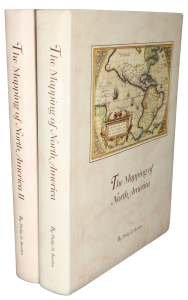Rare Maps and Prints
- World & Celestial
- North America
- West Indies, South & Central America
- British Isles
- British Isles
- English counties
- Large-scale
- Bedfordshire
- Berkshire
- Buckinghamshire
- Cambridgeshire
- Cheshire
- Cornwall
- Cumberland
- Derbyshire
- Devon
- Dorset
- Durham
- Essex
- Gloucestershire
- Hampshire
- Herefordshire
- Hertfordshire
- Huntingdonshire
- Islands
- Kent
- Lancashire
- Leicestershire
- Lincolnshire
- Middlesex
- Norfolk
- Northamptonshire
- Northumberland
- Nottinghamshire
- Oxfordshire
- Rutland
- Shropshire
- Somerset
- Staffordshire
- Suffolk
- Surrey
- Sussex
- Warwickshire
- Westmoreland
- Wiltshire
- Worcestershire
- Yorkshire
- Wales
- Scotland
- Ireland
- Western Europe
- Eastern Europe
- Middle East
- Africa
- Asia
- Australasia & Pacific
- Decorative Prints
- Title Pages
Mr. Philip D. Burden
P.O. Box 863,
Chalfont St. Giles, Bucks HP6 9HD,
UNITED KINGDOM
Tel: +44 (0) 1494 76 33 13
Email: enquiries@caburden.com
‘This book was, at the time of its appearance, both inflammatory and influential. It set forth British aims in North America, making a clear, vigorous, and incisive attack upon the French pretentions, telling its English readers rather more what they wished to be told than reminding them of unpleasant truths’ (ibid).
Ellis Huske (1700-55) had emigrated to Massachusetts by 1720 and became postmaster in Boston in 1734. He preceded Benjamin Franklin as deputy postmaster-general for the colonies. He was the publisher of the ‘Boston Weekly Postboy’ and is believed to have been the author of this work, ‘The Present State of North America’. His son, John Huske (1724-73) became a Boston merchant before moving to England in 1748. He was later described as being tough and unscrupulous and became a political ally of Charles Townshend. He often spoke on colonial matters, and it is likely that it was he who oversaw the publication of his father’s work. He would later become a supporter of the Stamp Act and it is he who was famously hung in effigy from the Liberty Tree in Boston in 1765. A scene immortalised in Paul Revere’s engraving with his name indicated in a word balloon nearby.
This is part 1 and was all that was published and is here with the rare map. Part 2 was never published. The map itself though not always found in this work is known to have been first published by 9 September 1755 (‘Public Advertiser’), pre-dating it has been noted, the Anti-Gallican map by William Herbert of the same year not issued until late December. It is important for providing accurate information on the presence of French forts on the frontier. Along with maps by Lewis Evans and John Mitchell published in the same year, it is considered one of the most influential maps in encouraging support for a rugged response to French encroachments.
The map deliberately extends beyond the Mississippi River to illustrate how the English were being hemmed in to the east coast. A most unusual feature of this map is recent colony of Georgia splitting that of South Carolina in two. A feature not discussed in Cumming’s work on maps of the southeast. Provenance: Boston Athenaeum (ink stamp on title); Library of Ernest E. Keet with bookplate. Edney (2003) ‘The Percy Map’; Howes (1962) H-840; Lande 463; McCorkle (2001) 755.16; ODNB; Sabin (1868-1936) 30794 & 34027; Simmons (1996) 1755#29.
The Present State of North America & c.
SOLD








